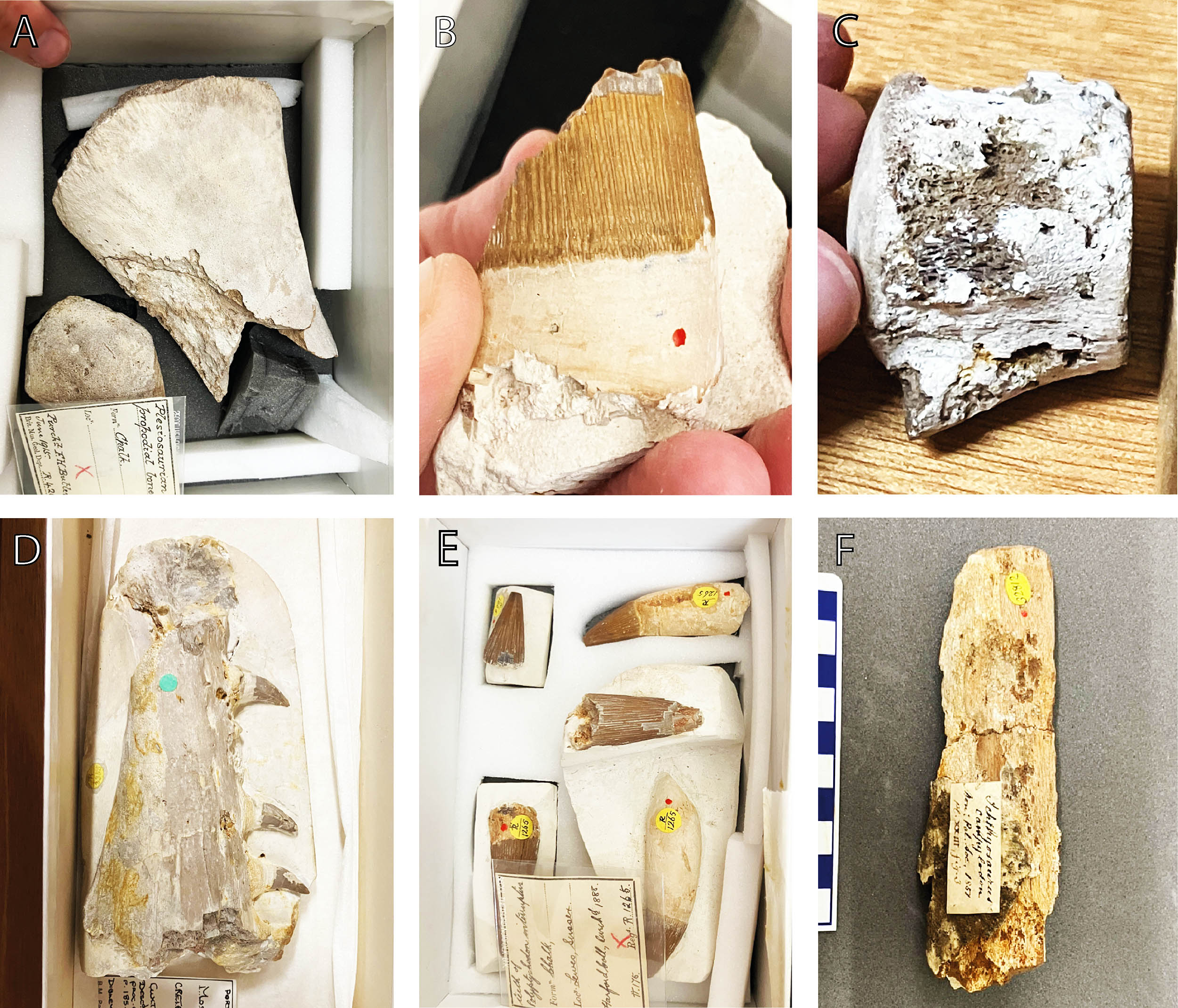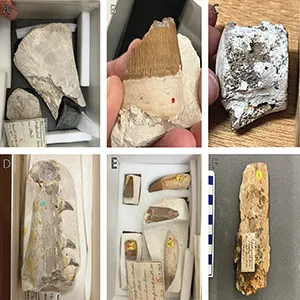- Grand Theft Auto VI expected to generate nearly $8 billion within two months of its release Times of India
- GTA 6 set to make history with $2B launch projection The Express Tribune
- GTA 6 release date, characters, map, price in India and other details we know digit.in
- GTA 6 India Price, Release Date, PC Requirements, Maps & Characters Revealed The Hans India
- GTA VI: 6 Upcoming New Characters To Watch Out For Times Now
Author: admin
-
Grand Theft Auto VI expected to generate nearly $8 billion within two months of its release – Times of India
-

Justice a collective duty, not one-man task: CJP Yahya Afridi
Chief Justice of Pakistan Yahya Afridi has said that justice is not the responsibility of any single person or institution, but a collective duty shared by all of humanity.
In his message on World Day for International Justice, the Chief Justice called for renewed dedication to justice, equality, and the rule of law, saying, “Justice knows no borders – it is the cornerstone of peace and human rights.”
Justice Afridi stressed that addressing global challenges such as terrorism, human trafficking, and environmental crises depends on upholding the rule of law and strengthening judicial systems.
“The Pakistani judiciary stands firmly with international efforts for justice,” he affirmed, highlighting that judicial reforms and empowering the underprivileged remain key priorities.
He further noted that justice is not a one-man effort—it requires collective participation. “We must work together to ensure fairness and equality in our societies,” he said.
Justice Afridi concluded by reminding the nation that only through strong justice systems can lasting peace, human dignity, and international cooperation be secured.
Continue Reading
-
Payroll Data Takes Center Stage as Strategic Asset at PayrollOrg’s 2025 Virtual Congress
At a workshop held on July 9 during PayrollOrg’s annual Virtual Congress, payroll professionals and employers were urged to recognize payroll data as a powerful tool for strategic business decision-making, not just as a back-office necessity. The session, “The Power of Payroll Data — How Payroll Becomes a C-suite Advisor,” led by Kathy Soderman, Managing Director at Ernst & Young LLP, highlighted the evolving role of payroll in shaping executive decisions and driving organizational success.
Unlocking Hidden Value
Soderman’s presentation underscored that payroll data—often overlooked—can provide critical insights for executive leadership. By transforming payroll from a transactional function into a strategic asset, organizations can influence workforce planning, financial forecasting, and overall business strategy. Payroll data, when integrated with human resources, time and attendance, accounting, and compliance systems, becomes a treasure trove of information, supporting everything from labor cost analysis to compliance monitoring.
Key Insights and Practical Steps
The session provided a step-by-step approach for payroll professionals to leverage data in several key areas:
Labor Cost Analysis: Collecting and categorizing payroll data enables organizations to calculate costs per employee or department, benchmark against industry standards, and inform staffing or automation decisions.
Turnover and Retention Trends: Payroll data helps track turnover rates, identify root causes, and support actions to improve employee retention.
Compliance and Risk Monitoring: Automated data collection and regular audits help ensure adherence to federal, state, and local regulations, reducing the risk of penalties.
Forecasting and Budgeting: Historical payroll data supports accurate labor cost forecasting, budget variance analysis, and scenario modeling.
Location-Based Insights: Segmenting payroll data by location allows for regional benchmarking of costs, productivity, and compliance.
Compensation Benchmarking: Comparing internal pay data to external market benchmarks ensures competitiveness and pay equity.
Workforce Productivity: Payroll data helps measure output per employee, utilization rates, and productivity trends.
Real-World Applications
The presentation included practical metrics for measuring payroll function efficiency, such as cycle times, process efficiency, productivity, and cost effectiveness. For example, metrics like total days to process payroll, number of payroll-related inquiries, and payroll disbursement per full-time equivalent (FTE) were discussed as benchmarks for continuous improvement.
Emerging Trends
The session also addressed the growing importance of pay equity and transparency, noting that global requirements for gender pay gap reporting are expanding rapidly. New regulations, such as the EU Pay Transparency Directive and various state laws in the US, are increasing the complexity and importance of accurate payroll data management.
Key Takeaways
Payroll professionals were encouraged to view payroll data as a rich source of business intelligence, capable of supporting real-time decision-making and aligning with C-suite priorities. When integrated with broader HR and finance systems, payroll data can help organizations predict turnover, optimize compensation strategies, and ensure compliance. Empowering payroll teams with analytics tools fosters a culture of data literacy and strategic thinking.
As organizations face increasing regulatory scrutiny and competitive pressures, leveraging payroll data for strategic insight is becoming essential for success in today’s business environment.
Take your tax and accounting research to the next level with Checkpoint Edge and CoCounsel. Get instant access to AI-assisted research, expert-approved answers, and cutting-edge tools like Advisory Maps and State Charts. Try it today and transform the way you work! Subscribe now and discover a smarter way to find answers.
Continue Reading
-

Police report 18% rise in disorder at football matches during 2024-25 season
“Policing men’s football creates significantly more demand than any other event in terms of public order deployments nationally, meaning every week, officers are taken away from policing communities to facilitate matches.”
He added “the police are subsidising clubs that quite happily spend up to a £1bn in a single transfer window.”
Commissioner Sir Mark Rowley, the head of the Metropolitan Police, also said earlier this month the clubs must pay towards the £70m cost of policing their matches every year.
Hate crime, reported at 420 matches last season, was the most common incident while 287 were related to race, 140 to sexual orientation, 20 to religion, 19 to disability and three to gender identity.
Manchester United had 121 fans arrested during the season – more than an any other club in the top six tiers of English football.
Manchester City were second with 94 arrests and West Ham, who had the most arrests in each of the previous three seasons, followed with 77 arrests.
The most common offences for arrest were public disorder (32%), violent disorder (22%) and the possession of Class A drugs (19%).
Rules introduced ahead of the 2022-23 season mean anyone caught in possession of Class A drugs in connection with football faces a five-year ban.
The number of online hate crimes also decreased from 322 in 2023-24 to 212 last season. Of these, 199 were related to men’s game and 13 to women’s.
Policing minister Diana Johnson said: “Police up and down the country work incredibly hard to ensure football stadiums are safe, so we can all enjoy our national game.
“Today’s statistics show that these efforts are paying off and strong action is being taken to stop violence and disorder from ruining football.”
Continue Reading
-

These States May See Aurora Borealis Thursday
Topline
The northern lights could appear in several states in the northern U.S. on Thursday night, according to the National Oceanic and Atmospheric Administration, as the Perseids meteor shower may also appear in the night sky.
The possible aurora borealis coincides with the Perseids meteor shower, with hundreds of meteors … More
Key Facts
NOAA forecast a Kp index of three on a scale of nine for Thursday night, as the aurora could become “brighter” and be seen farther from the poles.
The agency said the Kp index could reach nearly four early Friday morning, potentially pulling the northern lights farther south, though NOAA expects no geomagnetic storms or significant transient or recurrent solar winds to disrupt the Earth’s geomagnetic field.
Quieter auroral activity is forecast through the early weekend, with a maximum Kp index of just over two forecast for Friday and Saturday nights, according to NOAA.
Where Will The Northern Lights Be Visible?
A higher chance of seeing the northern lights is forecast across northern Canada and Alaska, once the sun sets in the state. A lesser chance is forecast in parts of northern Montana, North Dakota, northern Minnesota, northeastern Washington, northern Idaho, northern Wisconsin and Upper Michigan. (See map below.)
Thursday night’s view line.
What’s The Best Way To See The Northern Lights?
NOAA recommends traveling to a high, north-facing vantage point away from light pollution sometime between 10 p.m. and 2 a.m. local time.
What’s The Best Way To Photograph The Northern Lights?
Photography experts told National Geographic it’s best to use a wide-angle lens, an aperture or F-stop of four or less and a focus set to the furthest possible setting. With a smartphone, NOAA recommends enabling night mode, disabling flash and relying on a tripod to stabilize the image.
Key Background
Stronger auroral displays are expected through early 2026 after activity on the sun’s surface reached a “solar maximum” late last year, NOAA and NASA said. This peak marks an increase in solar events like solar flares and coronal mass ejections, which are responsible for disrupting Earth’s geomagnetic field and creating the northern lights. A “solar maximum” occurs throughout the sun’s 11-year cycle, and the latest peak surpassed projections by NOAA and NASA, which said auroral displays hit a 500-year peak in 2024.
What To Watch For
Northern lights displays this week coincide with the Perseids meteor shower, which is expected to begin Thursday night. The meteor shower’s peak night is forecast between Aug. 12-13, when hundreds of meteors may be visible across the night sky.
Further Reading
Continue Reading
-

A real wag: Superman gets the bleak realities of dog ownership spot on | Film
Superman might be one of the most confusing blockbuster films to hit the big screen this year. The tone, as you might expect from a goofball superhero movie that is plainly about the invasion of Gaza, is all over the shop. Too many characters contribute too little to the plot. There are moments when it feels like it was written specifically to provide work for the silly-glasses and ironic-haircut industries. It is a bit of a mess.
But that said, one thing is demonstrably true: the dog is cool. As shown in the trailer, Krypto the superdog is Superman’s secret weapon. A mile away from his last screen outing, where he was muscular and proud and voiced by Dwayne “The Rock” Johnson, Superman’s Krypto is scrappy and wild. He doesn’t obey commands. He destroys whatever equipment is put in front of him. Whenever he may or may not save the day, it seems like he does it out of accident rather than design.
And now everybody wants one. Research by the dog training app Woofz has shown that Google searches for “adopt a dog near me” jumped 513% during Superman’s opening weekend. What’s more, searches for “rescue dog adoption near me” rose by 163%, while “adopt a puppy” rose by 31%. And these searches are specific, too. Krypto is apparently a schnauzer-terrier mix, and “adopt a schnauzer” searches have risen by almost 300% since Superman’s release.
There are many potential reasons for this. Perhaps viewers who found themselves confused by Superman’s swampy storytelling latched on to Krypto as a guidepoint. Perhaps they have short attention spans and fail to think things through, as with the boom of dalmatian sales (and subsequent boom in dalmatian abandonments) after 101 Dalmatians was released in 1996. Or perhaps it’s because Superman is one of the rare films to get dog ownership exactly right.
Not entirely realistic … Marley & Me. Photograph: REX/c.20th Century Fox/Everett So often in Hollywood, dogs are either loyal companions or would-be therapists who teach their owners about the meaning of love. Think of Marley and Me, in which a dog helps Owen Wilson to love and then dies. Or Turner and Hooch, in which a dog helps Tom Hanks to love and then gets murdered. Or Old Yeller, in which a dog helps a boy to love and then the boy shoots it with a shotgun. Some mix the formula up a little – in The Call of the Wild a dog teaches Harrison Ford to love, and then Harrison Ford dies – but you get the gist.
Meanwhile, Krypto is a bit of a dick. The first time we meet him, Superman has been beaten for the very first time. Bleeding and broken, as a last resort he calls on his faithful pup to help him to safety. In any other film, this is exactly what Krypto would have done. But here he leaps all over Superman instead, doing little but compounding his injuries. He’s excited. He wants to help. But he’s also a dog, so he’s sort of useless.
Winningly, there’s no sentimental ending to his story, either. He doesn’t ever really bond with Superman, and he definitely doesn’t die. In the end (and this probably counts as a spoiler), Supergirl comes and picks him up, and Superman barely even notices. There’s no growth. Nobody learns anything. It’s sort of great.
It’s telling that Krypto was only written into the script after James Gunn adopted a dog of his own, named Ozu. Last year on Twitter, Gunn wrote that “Ozu, who came from a hoarding situation in a backyard with 60 other dogs and never knew human beings, was problematic to say the least. He immediately came in and destroyed our home, our shoes, our furniture – he even ate my laptop. It took a long time before he would even let us touch him. I remember thinking, ‘Gosh, how difficult would life be if Ozu had superpowers?’ – and thus Krypto came into the script.”
And maybe that’s the key here. There were no misty-eyed Marley and Me-style reminiscences about Ozu. Gunn was living through the incredibly annoying part of dog ownership where neither party fully trusts the other, and just lifted it wholesale into the script. And this realistic depiction has apparently translated to the hearts of Superman’s audience, as we will soon see when thousands of schnauzers are definitely not abandoned at shelters four months from now.
Continue Reading
-
Epidemiologist Derek Cummings returns to Johns Hopkins
Renowned epidemiologist and Johns Hopkins alum Derek Cummings, Engr ’01 (MS), ’04 (PhD), BSPH ’04 (MHS), has joined the university as the Bloomberg Distinguished Professor of Infectious Disease Dynamics. Driven by a fascination with how diseases spread and evolve, Cummings is at the forefront of research that informs how public health can respond to global threats, investigating the spatial and temporal dynamics of the spread of infectious diseases in order to develop interventions.
Cummings studies the ecology and evolution of infectious diseases through a combination of theoretical modeling, field studies, clinical trials, and laboratory investigations. His research is primarily concentrated on respiratory and vector-borne infections, including dengue, influenza, measles, chikungunya, and SARS-CoV-2. He seeks solutions that are grounded in science and responsive to the complexities of transmission dynamics of pathogens in many settings.
“I’m interested in the process of contagion,” Cummings explains. “How do pathogens jump from one person to another? A lot of the interventions that I’m interested in are focused on breaking those transmission chains and preventing the infection from getting from one person to another. I want to follow whatever path is needed to deliver, evaluate, and implement strategies to reduce infections and the burden they place on communities.”
About the BDP
- Name: Derek Cummings
- Title: Bloomberg Distinguished Professor of Infectious Disease Dynamics
- Appointments: Department of Epidemiology, Bloomberg School of Public Health; Department of Biomedical Engineering, Whiting School of Engineering
- BDP Cluster: Preparing and Responding to Emerging Pandemics
- Previous role: Department of Epidemiology and Emerging Pathogens Institute, University of Florida
- Education: ScB in Chemistry, Brown University; MS in Geography and Environmental Engineering, Johns Hopkins University; MHS in International Health, Johns Hopkins University; PhD in Geography and Environmental Engineering, Johns Hopkins University
Cummings investigates how pathogens spread within populations, emphasizing the role of immunity in shaping these patterns. His research in immuno-epidemiology explores how the immune response can be leveraged to detect infections and inform how public health strategies can best take advantage of our immune system’s incredible adaptability. This approach is particularly relevant for pathogens exhibiting genetic variability, such as influenza, where the virus evolves to evade immune detection, requiring regular updates to vaccines.
“Many of our most effective interventions, most notably vaccines, rely on inducing an immune response that targets one specific part of the pathogen’s life cycle,” Cummings says. “Pathogens that are genetically variable have many different strategies to change over time. This becomes an evolutionary arms race between our immune response and the pathogen trying to evade it. By understanding these dynamics better, we can greatly reduce the burden of pathogens and how much illness is associated with them.”
Cummings played a key role in the response to COVID-19, evaluating factors associated with severe COVID-19 illness, immune responses, and the role of genetic factors in coronavirus susceptibility. Cummings hopes that lessons learned from the response to the COVID-19 pandemic will inform more effective strategies in the future.
“This is a pivotal moment for the field of epidemiology,” says Cummings. “We’re being challenged to adapt and realign in response to what we’ve learned not only from recent crises, but from rapid advances in science and technology. It’s incredible how much humanity has done to reduce the burden of infectious disease and I’m so inspired by all the progress that has been made. It’s easy to forget how much infectious disease burden has shaped humanity. The pace of scientific discovery today will allow us to understand more about pathogens and their interactions with humanity to find new ways to address their current and potential future burden to continue to improve human health.”
“This is a pivotal moment for the field of epidemiology. We’re being challenged to adapt and realign in response to what we’ve learned not only from recent crises, but from rapid advances in science and technology.”
Derek Cummings
Bloomberg Distinguished Professor
Beyond the COVID-19 pandemic, Cummings has long been engaged in efforts to detect and respond to outbreaks, including characterizing patterns of spread early in emergence, and developing surveillance tools to detect infectious diseases before they proliferate and become serious threats to public health. Cummings, who returns to Johns Hopkins from the University of Florida, brings this experience to Johns Hopkins as part of the Preparing and Responding to Emerging Pandemics BDP cluster.
“This is a fantastic opportunity to leverage talent and resources across the university to convene people working at multiple scales, from the molecular up to population levels,” Cummings says. “Bringing together folks working at the bench, theoreticians and mathematicians, analysts working on models, and people working on the delivery of public health to understand these multifaceted phenomena of disease transmission that traverse traditional scientific boundaries will help us come up with more innovative ways to respond to pandemic risks.”
Cummings currently leads an innovative intervention trial assessing the use of Wolbachia-infected mosquitos to combat dengue in Brazil. Wolbachia is a naturally occurring bacterium that, when it infects mosquitos, reduces their ability to transmit dengue and other viruses. The bacterium is also passed on to mosquito offspring, increasing its prevalence over time. This method has shown promise in reducing dengue incidence in previous studies. Cummings’ ongoing trial aims to refine the approach of how to best introduce this intervention and assess its effectiveness against different arboviruses, viruses transmitted to humans by arthropods such as mosquitos and ticks.
“This project reflects the kind of science that I strive to do,” says Cummings. “Evaluating and optimizing this intervention requires understanding a network of interactions between mosquitoes, the Wolbachia bacteria, viruses, and humans. Understanding and measuring these ecological and evolutionary interactions requires analytical tools and trial designs capable of capturing systems-level complexity.”
According to Ellen J. MacKenzie, dean of the Bloomberg School of Public Health, Cummings was a prime candidate for a Bloomberg Distinguished Professorship.
“Dr. Cummings is a pioneering epidemiologist whose work not only reshapes how we forecast outbreaks but also how we prepare for them,” she says. “His deeply interdisciplinary approach to collaborative, globally engaged research and dedication to mentoring the next generation of scientists make him an invaluable presence at Johns Hopkins.”
Adds Ed Schlesinger, dean of the Whiting School of Engineering: “Dr. Cummings brings visionary leadership to the field of immuno-epidemiology, combining deep scientific insight with a commitment to translating biomedical research into real-world strategies that reduce the burden of infectious disease in communities worldwide.”
As a Bloomberg Distinguished Professor, Cummings joins an interdisciplinary cohort of scholars working to address major world problems and teach the next generation. The program is backed by support from Bloomberg Philanthropies.
Continue Reading
-

PayPal USD Expands to Arbitrum, Bringing Layer 2 Efficiency to Multi-Chain Development Stack
PayPal USD Expands to Arbitrum, Bringing Layer 2 Efficiency to Multi-Chain Development Stack
Deployment on Arbitrum further scales PayPal USD payment use cases while maintaining transactional stability and security.
San Jose, Calif., July 17, 2025 – Today, PayPal announced that it is expanding PayPal USD (PYUSD) onto Layer-2 blockchains starting with Arbitrum. This deployment provides developers with their first Layer 2 option for PYUSD integration, combining the stablecoin’s established reliability with Arbitrum’s low-cost, high-throughput transaction processing.
By deploying PYUSD onto Arbitrum, developers will be able to seamlessly expand smart contract deployment from Ethereum mainnet to Arbitrum without rewriting code, allowing for easy migration of dApps while also providing developers with Ethereum-compatible tooling, and established DeFi protocols. Additionally, Arbitrum supports transparent, on-chain governance, making protocol upgrades and decision-making accessible while leveraging Ethereum’s security model for scalability and data availability.
“A key to any cryptocurrency’s success is a robust developer ecosystem, but to encourage developers into the community, we must give them the tools they need to build and deploy wherever they wish,” said May Zabaneh, Vice President of Product, PayPal. “Whether they need Ethereum’s maximum security and deep liquidity, Solana’s high throughput and low latency, or Arbitrum’s Ethereum compatibility with Layer 2 efficiency, developers can now deploy PYUSD-powered applications on the blockchain that best fits their technical requirements.”
Additionally, this deployment comes at a pivotal moment as businesses worldwide seek alternatives to more traditional payment processors due to the high costs associated with transactions. PYUSD’s expansion to Arbitrum represents a milestone in the stablecoin’s evolution, bringing Layer 2 efficiency to payment applications for the first time and providing:
- Near Instant Settlement at Scale: Transactions on Arbitrum process in seconds, enabling near real-time payment experiences that maintain the transparency and programmability of blockchain technology.
- Micropayment Viability: With transaction costs typically under one cent, PYUSD unlocks potential use cases including content micropayments, usage-based billing, and instant rewards distribution that would be economically unfeasible on other networks.
- Enterprise-Grade Reliability: Arbitrum’s proven track record of uptime and growing total value locked of over $2.5 billion demonstrates the network stability required for mission-critical payment applications.
Arbitrum’s optimistic rollup technology allows PYUSD to enable transactions that settle in seconds rather than minutes, and with fees typically under $0.01 compared to Ethereum mainnet’s often prohibitive costs. While PYUSD already provides stable value transfer on Ethereum and Solana, deploying on Arbitrum continues to advance the company’s mission of revolutionizing commerce and bringing new technologies into the mainstream.
As PYUSD expands beyond Ethereum and Solana into this initial Layer 2 blockchain, Arbitrum serves as a foundation for future expansion to additional scaling solutions.
IMPORTANT DISCLOSURES
This press release is for informational purposes only and is not intended as financial, investment, or other advice. The use and exchange of digital assets, including stablecoins such as PYUSD, may involve complex risks, including but not limited to:
- Network & Custody Risks: Transactions on blockchains – and the blockchains themselves – are subject to a range of operational, technological, and security risks. Users are responsible for safeguarding their private keys and/or working with reputable custodians/wallet providers; loss of access may lead to the permanent loss of funds.
- Third-Party Reliance: Digital assets rely on third-party blockchain software and network infrastructure. Neither PayPal nor Paxos Trust Company, LLC (“Paxos”) has control over blockchain networks and is not liable for any blockchain’s performance, security, or ongoing availability.
- Redemption and Market Risk of Fiat-Backed Stablecoins: U.S. dollar-backed stablecoins that are regulated by the New York State Department of Financial Services are designed to maintain a stable value of one U.S. dollar per token. Individuals or entities with direct redemption access via PayPal, Paxos or authorized partners are guaranteed to convert PYUSD 1:1 for US dollars. All other parties may be limited to selling PYUSD at market prices.
- Regulatory Uncertainty: Regulatory frameworks for digital assets are evolving. Availability or legality of digital asset services may change without notice, and services may be restricted, suspended, or terminated in certain jurisdictions as required by law or regulation.
- No FDIC/SIPC Protection: Digital assets, including PYUSD, are not insured by the Federal Deposit Insurance Corporation (FDIC) or the Securities Investor Protection Corporation (SIPC).
- Terms & Conditions: Use of PYUSD is subject to Paxos and PayPal’s Terms & Conditions, including disclaimers on liability and user responsibilities. Transactions are irreversible once recorded on the blockchain. You are advised to review and understand all applicable terms.
- Service Availability & Illegal Activity: PYUSD and related payment services may be suspended or terminated due to events or investigations involving illegal activity, system failure, or other factors beyond PayPal’s control.
- Forward-Looking Statements: Statements in this press release regarding potential product features, expansion plans, and regulatory outcomes are forward-looking and subject to change. Actual results may differ materially due to known and unknown risks, uncertainties, and other factors.
About PayPal USD (PYUSD)
PayPal USD is issued by Paxos Trust Company, LLC, a fully chartered limited purpose trust company. Paxos is licensed to engage in Virtual Currency Business Activity by the New York State Department of Financial Services. Reserves for PayPal USD are fully backed by U.S. dollar deposits, U.S. Treasuries and similar cash equivalents, and PayPal USD can be bought or sold through PayPal and Venmo at a rate of $1.00 per PayPal USD.
PayPal, Inc. (NMLS ID #: 910457) is licensed to engage in Virtual Currency Business Activity by the New York State Department of Financial Services.
About PayPal
PayPal has been revolutionizing commerce globally for more than 25 years. Creating innovative experiences that make moving money, selling, and shopping simple, personalized, and secure, PayPal empowers consumers and businesses in approximately 200 markets to join and thrive in the global economy. For more information, visit https://www.paypal.com, https://about.pypl.com/ and https://investor.pypl.com/.
Media Contact:
MediaRelations@paypal.com
Continue Reading
-

Justice is everyone’s job, not just one institution: CJP Afridi
ISLAMABAD (Dunya News) – Chief Justice of Pakistan Yahya Afridi has said that justice is not the duty of one individual or institution alone, but a shared responsibility of all humanity.
In his message on World Day for International Justice, the Chief Justice called for renewed commitment to justice, equality, and the rule of law. “Justice knows no borders – it is the foundation of peace and human rights,” he stated.
Justice Afridi emphasised that real solutions to global challenges – including terrorism, human trafficking, and environmental crises – lie in upholding the rule of law and strengthening judicial systems.
Also read: Justice system will be further strengthened, says Chief Justice Yahya Afridi
“The Pakistani judiciary stands shoulder to shoulder with international efforts for justice,” he said, adding that reforms in the judicial system and giving voice to the underprivileged remain top priorities.
He pointed out that justice is not a one-man show — it’s a cause that requires everyone to play their part. “We must all join hands to ensure fairness and equality in our societies,” he urged.
Marking the day, Justice Afridi reminded the nation that only through strong justice systems could lasting peace, human dignity, and global cooperation be achieved.
Related Topics
‘ ; r_text[1] = ” ; r_text[2] = ” ; r_text[3] = ” ; r_text[4] = ” ; r_text[5] = ” ; r_text[6] = ” ; var i = Math.floor(r_text.length * Math.random()); document.write(r_text[i]);
Continue Reading
-

Ancient worms feasted on the bones of giant marine animals
Dead marine giants do not fade quietly. After scavengers strip away the flesh, their sinking bones become banquet halls for specialized worms. These worms drill through the skeleton and siphon its last reserves of fat and protein.
A new survey of those ancient drill marks has identified seven distinct burrow types, revealing just how long these bone-eaters have shaped life on the seafloor.
The study was led by Ph.D. student Sarah Jamison-Todd in collaboration with curator Marc Jones and colleagues at the Natural History Museum of London.
By combing through more than 130 Cretaceous reptile fossils, the team identified distinctive tunnel patterns in the bones. They then scanned the best examples with micro-CT and linked each pattern to a unique “ichnospecies.”
This bolsters evidence that the living bone-eating worms known as Osedax descend from a lineage at least 100 million years old.
Worms feast on sunken bones
Modern Osedax worms colonize whale falls all the way from polar shallows to abyssal plains. Mouthless and gutless, they rely on symbiotic bacteria to digest bone, feeding through root-like filaments and leaving behind bulbous cavities.
Similar traces were found in fossil skeletons of plesiosaurs, ichthyosaurs, turtles, and early whales, hinting at a deep evolutionary history.
“We haven’t found anything else that makes a similar burrow to these animals,” Jamison-Todd explained. “As the ancient bores are so similar to modern Osedax species, and we don’t have body fossils to contradict us, we assume that they were made by the same or a similar organism.”
“It shows the bone-eating worms are part of a lineage that stretches back at least to the Cretaceous, and further. We can see how the diversity of bone-eating worms changes across millions of years.”
Historic bones, new insights
Pinpointing that history meant first nailing down the ages of century-old specimens. “Some of these were collected in the 1800s, and the information on them can be very brief, so it’s difficult to know exactly where they’re from,” Jones said.
“We focused on specimens from the Chalk of the U.K., as our colleagues have been working on better understanding these Cretaceous ecosystems using museum collections.”
“They’re also working to date fossils of an unknown age. By using the remains of small organisms that make up the Chalk itself, we were able to date the fossils to more precise time slices of the Cretaceous Period.”
Worm trails hidden in ancient bones
Armed with refined dates, the researchers searched for borehole entrances scarcely wider than a needle.
“We examined over 130 different fossils for signs of bone-eating worm burrows,” Jamison-Todd said. “However, not all fossils which look like they’ve been bored into by these worms have been – it could have been caused by different animals or environmental weathering.”
“The only way to really confirm this is to put the fossils under a CT scanner. This allows us to create 3D reconstructions of the inside of the bone and see the different patterns that have been left behind.”
The scans revealed meandering tubes, lobed pockets, and tree-like chambers hidden beneath the surface.
Each shape repeated across multiple specimens, convincing the researchers that they marked discrete behavioral blueprints rather than random damage.
Naming the ancient burrow types
Six new burrow types from the Chalk and one from Belgium form a seven-member ichnospecies roster. The names draw on both form and inspiration.
Osspecus arboreum branches like a sapling inside shattered ribs. Osspecus morsus gnaws through tooth roots, its Latin epithet recalling a bite.

The evolution of bone-eating worm diversity in the Upper Cretaceous Chalk Group of the United Kingdom. Click image to enlarge. The name Osspecus eunicefootia honors Eunice Newton Foote, the overlooked pioneer who first linked atmospheric carbon dioxide to global warming.
Each label provides a shorthand for paleontologists who stumble on similar traces elsewhere. This lets them slot new data into a growing catalog of deep-sea recyclers.
Diversification of bone-eating worms
Bone falls create oases on the otherwise sparse ocean floor, feeding entire communities from bacteria to crabs. Charting how bone-worms diversified illuminates both those ecosystems and the broader carbon cycle.
“There are many more examples of boring that haven’t yet been named from both ancient and modern bone-eating worms,” Jamison-Todd said. “In fact, some bores from the Cretaceous appear to be similar to ones that are still made today.”
“Finding out whether these burrows are made by the same species, or are an example of convergent evolution, will give us a much better idea of how these animals have evolved, and how they have shaped marine ecosystems over millions of years.”
A window into lost oceans
Because Osedax bores only soft, fatty bone, their presence proves that large carcasses once littered even shallow Cretaceous seas. These remains came first from marine reptiles, and later from early whales.
The worms’ longevity also suggests that whenever vertebrate giants die, life quickly evolves to recycle them.
By giving formal names to the delicate tunnels etched in chalky ribs and teeth, the study turns museum drawers into time-lapse images of ecological succession.
Each burrow is a snapshot of a feast that ended eons ago yet still whispers of the unseen engineers who keep nutrients moving through the dark ocean floor.
Image credit: Sarah Jamison-Todd
The study is published in the journal PLOS One.
—–
Like what you read? Subscribe to our newsletter for engaging articles, exclusive content, and the latest updates.
Check us out on EarthSnap, a free app brought to you by Eric Ralls and Earth.com.
—–
Continue Reading